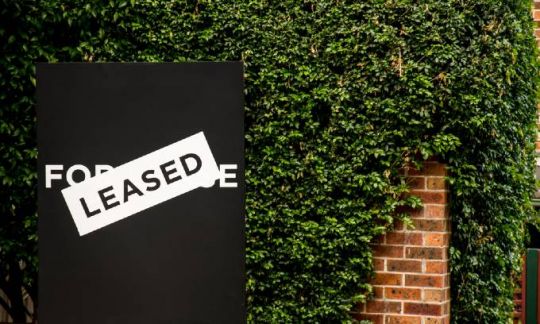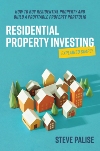What is a good rental yield and how can you improve yields?
Rental yields are one way to measure how a property investment is performing. In this edited extract from his book, Residential Property Investing Explained Simply, Steve Palise reveals what is considered a good rental yield and offers tips on how to boost yields.

Rental yields are one way to measure how a property investment is performing. In this edited extract from his book, Residential Property Investing Explained Simply, Steve Palise reveals what is considered a good rental yield and offers tips on how to boost yields.
What is rental yield?
With residential property, ‘yield’ refers to the yearly rental income a property generates as a proportion of the property’s purchase price – the higher the rental return relative to the purchase price of the property, the higher the yield.
It’s a good idea to learn about how yields work because property professionals and commentators regularly quote yields to express the strength of investment properties. Understanding the yield of an investment is also useful for comparing against results of a different type of investment, such as shares.
How to calculate rental yield
There are two types of rental yields – gross yield and net yields. These are calculated using the following metrics:
- Gross income: is the total yearly income collected from the property. It includes rent and any other extras such as payment for electricity, water, rates, property management and other outgoings, if the tenant is paying these.
- Net income: is the gross rental income less all expenses, such as council rates, water rates, insurances, maintenance and property-management expenses. It’s the amount the owner receives after all expenses have been paid. This excludes your mortgage repayments, however.
Gross rental yield
To calculate the gross yield, you divide the gross annual income by the purchase price of the property (you could also use the market value) and multiply it by 100.
Let’s say you bought a property for $800,000 and rented it out for $650 a week ($33,800 a year). The gross rental yield is 4.22% ($33,80/$800,000 x 100).
Net rental yield
To calculate the gross yield you divide the net annual income by the purchase price of the property (you could also use the market value) and multiply it by 100.
Let’s use the same example as above and assume the property purchase price was $800,000 and the annual rental income is $33,800. The expenses associated with owning the property (excluding the mortgage repayments) add up to $7,000 a year which means the net income is $26,800 ($33,800 – $7,000). The net rental yield is 3.33% ($26,800/$500,000 x 100). Please note this is excluding maintenance!
What is a good rental yield?
In metropolitan areas, especially state capitals, gross rental yields typically range from 2.5% to 4%. Yields that are typically below 2.5% are very high-end, luxurious properties. In regional areas, gross rental yield can yields are typically 3.5-4.5%.
There’s always a lot of hype and commentary on yields, with many arguing that lower-yielding properties are typically better for capital growth as they are in ‘blue-chip’ inner- to middle-ring capital city suburbs, whereas high-yield properties will have less capital growth but a higher cash flow. But this is not always the case. There are other factors – for example, higher yielding properties can have a higher chance of vacancy, or underlying vulnerabilities such as being in a flood-risk area.
There is a lot of data around which yields typically perform the best, however, this is always going to be different in every market cycle depending on the type of property, the location and the demand for the properties. Choosing the right asset in the right location at the right time is the true art of investing.
How vacancy rates affect rental yields
When looking for an investment property consider the trend of vacancy rates. The vacancy rate essentially describes how much competition is in the market for rental properties. It provides a strong indicator of what demand there will be for an investment property and whether a certain locality will likely have difficulty finding tenants.
Previously, a vacancy rate of 3% is ‘healthy’ as it’s considered the equilibrium point at which the market is evenly balanced between landlords and renters. Vacancy rates have plummeted post-covid. As vacancy rates trend down towards 1.0% and lower, the pendulum swings in the favour of the landlord. This means you will have a greater choice of potential tenants, and with the increase in demand for rental properties, asking rents will also increase. We have seen some of the sharpest rental increases in the history of property in Australia due to these tight vacancy rates. To note:
- In the 30-day period leading up to April 15, 2024, the asking rents in the capital city have shown a consistent upward trajectory, marking a further 1.3% increase, bringing the total rise over the past year to 9.2%.
- Canberra and Hobart witnessed decreases in rents, with reductions of 0.3% and 1.1% respectively.
- Perth experienced the most significant surge with a 2.8% increase.
- Despite a slight dip of 0.1% in house rents, the overall rental growth for capital cities moderated to a 0.5% rise over the past month.
- Considering both urban and regional areas, national rents saw a 1% uptick during the same timeframe.
- The median weekly asking rent for dwellings nationwide stands at $621.84.
- Sydney leads in house rents, commanding a weekly rate of $1,053.56.
- Currently, Hobart offers the most affordable rental units among capital cities, with an average of $461.36 per week.
10 ways to improve rental yields
Once you’ve chosen a property, there are a few ways you can increase the yield, which are all about enhancing the attractiveness of your property to tenants. Here are 10 of the best ways to grow rental yield.
1. Renovate
Renovating can help you achieve a much higher rent, and therefore yield, compared to the purchase price and renovation costs. This is a great option if you have an older house that has plenty of refurbishing potential.
2. Increase façade and kerb appeal
Emotional tenants want to live somewhere they feel safe and are proud to be, and will pay extra to live in properties they deem to be well maintained and beautiful.
3. Use better photos
Investing in high-quality photography to market your property will bring more tenants through the door, and more applications.
4. Stage the property
This is where you engage a professional stylist to bring in furniture and soft furnishings to create emotional impact – and attract a higher price.
5. Add off-street parking
This is ideal for tenants with multiple cars who value safety.
6. Increase storage
If you have dead zones within the property, utilise them for storage. This could include an attic conversion, storage under stairs or creating new cupboard space. The more storage, the better.
7. Create an outdoor entertaining room
Turn a courtyard or part of a backyard into a new living space using clever design, which will add value for different demographics.
8. Do some landscaping
You don’t need to hire a landscape architect – even just adding in soft outdoor lighting is enough to create a mood and an emotional connection with tenants.
9. Allow pets
Allowing pets in the property will enable you to attract a much wider tenant base.
10. Update appliances
Update the washing machines, dryer and air conditioners so that tenants have access to high-quality amenities within your property. They will also be easier for you to maintain long term.
Also, once you have a tenant in place, plan rent reviews. This will give you space to plan as well, but remember to seek market comparisons to ensure you are charging in line with what the market is willing to pay.

This is an edited extract from Residential Property Investing Explained Simply (Major Street Publishing $34.99), republished with permission.
Cover image source: Daria Nipot/Shutterstock.com
This article was reviewed by our Content Editor Alasdair Duncan before it was updated, as part of our fact-checking process.

The comparison rate for all home loans and loans secured against real property are based on secured credit of $150,000 and a term of 25 years.
^WARNING: This comparison rate is true only for the examples given and may not include all fees and charges. Different terms, fees or other loan amounts might result in a different comparison rate.
 Owner occupied
Owner occupied
 30% min deposit
30% min deposit
 Redraw facility
Redraw facility
Try our Home Loans comparison tool to instantly compare Canstar expert rated options.
The comparison rate for all home loans and loans secured against real property are based on secured credit of $150,000 and a term of 25 years.
^WARNING: This comparison rate is true only for the examples given and may not include all fees and charges. Different terms, fees or other loan amounts might result in a different comparison rate.





